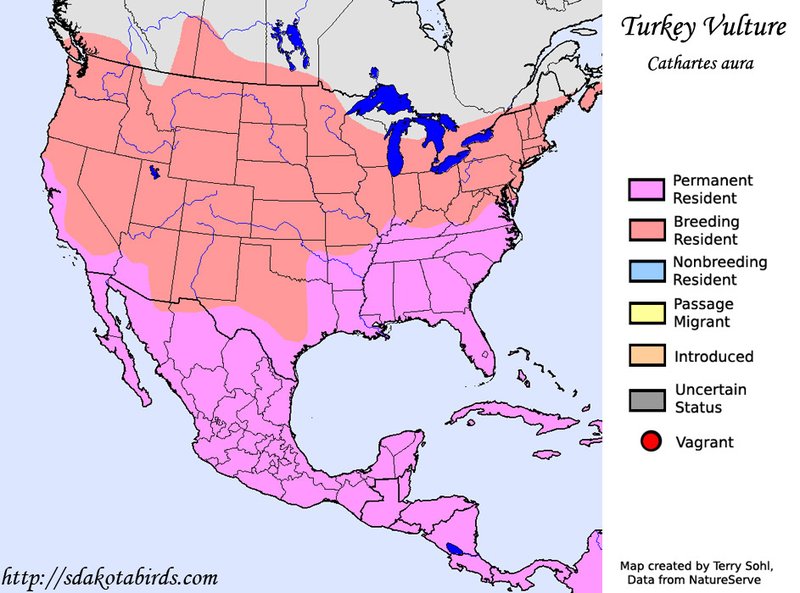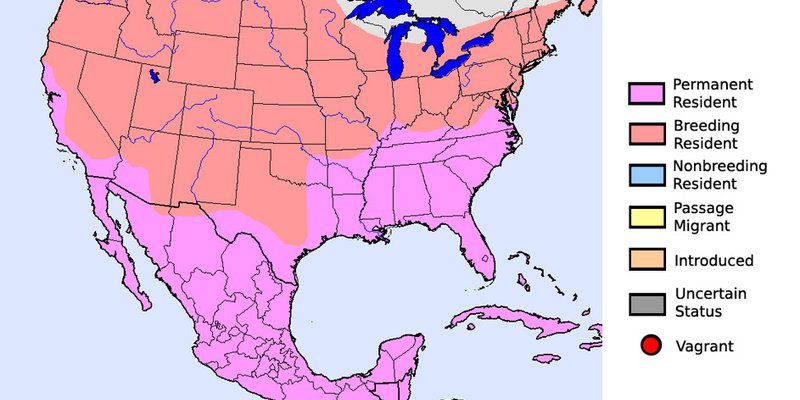
Turkey vultures are not just your everyday birds; they play a crucial role in the ecosystem by scavenging on carrion, which helps keep the environment clean. Think of them as nature’s clean-up crew. In this article, we’re going to explore the global habitats and ranges where these magnificent creatures can be found, making it easier for you to spot them on your next outdoor adventure.
Recognizing Turkey Vultures
Before you dash off to look for turkey vultures, it’s essential to identify what they look like. These birds are large, with a wingspan that can reach up to 6 feet. Their feathers are mostly dark, with a distinctive red head that’s almost bald. This unique appearance helps them stay clean while scavenging for food—no feathers to trap the smell or bacteria! Their flight is quite graceful, with long wings that allow them to glide smoothly without flapping much.
Now, you might be wondering why their heads are bald at all. Here’s the thing: without feathers, it’s easier for them to maintain hygiene when feeding on dead animals. Picture this: if they had feathers on their head, they’d have a much messier time digging into carrion, right? Their keen sense of smell also sets them apart from other vultures; they can detect rotting flesh from miles away.
North America: The Turkey Vulture’s Home Base
In the United States and Canada, turkey vultures are prevalent. They typically inhabit a variety of landscapes, from warm, open woodlands to low, grassy areas. During the summer, you’ll find them soaring over fields and roadsides, often searching for roadkill or other dead animals.
Here’s a fun fact: turkey vultures are migratory. They head south in the winter, usually migrating down to Mexico and Central America. So, if you live in a northern state, you might not see them during the colder months! Keep an eye out for them returning in spring, as they typically announce their arrival with their characteristic soaring flight.
Spotting Turkey Vultures in South America
Turkey vultures have a wide range that extends into South America as well. Countries like Brazil, Argentina, and Colombia provide perfect habitats for them. In these regions, they can often be seen in more tropical settings, such as savannas, grasslands, and even suburban areas. They adapt quite well to varied environments, which is part of what makes them so successful as a species.
One interesting area to spot turkey vultures in South America is around agricultural zones. They thrive in places where livestock and wildlife are present, as these areas often provide ample food opportunities. So, if you’re hiking through a national park in Brazil, keep your eyes peeled—you might catch sight of a turkey vulture, with its wings spread wide, riding the warm air currents.
Europe and Turkey Vultures
While turkey vultures are primarily found in the Americas, they do have some relatives in Europe, like the griffon vulture. It’s important to note that the turkey vulture itself doesn’t naturally occur in Europe, but their cousins can be seen soaring across the skies in countries such as Spain and France. If you’re traveling there, looking for these beautiful birds can enhance your experience.
In areas like Spain’s national parks, the griffon vulture can often be found perched on cliffs or gliding overhead. Their behaviors are similar, and you might notice that both birds exhibit impressive wingspan techniques while in flight. It’s a fantastic way to appreciate the diversity of vultures across different continents—even if the turkey vulture isn’t on the menu!
Best Places in Asia to Spot Vultures
Asia, much like Europe, doesn’t have turkey vultures, but it’s an excellent place to see some incredible vulture species. In countries like India and Nepal, you can find the Indian vulture and Himalayan vulture. While not the same as the turkey vulture, these birds are part of the same family and share similar scavenging roles.
Visiting national parks in these regions can provide opportunities to spot these majestic birds. For instance, in the Chitwan National Park in Nepal, you might see vultures circling overhead, looking for their next meal. This experience is a fantastic way to connect with nature and observe how these birds fit within their ecosystems.
How Habitat Affects Turkey Vulture Sightings
Understanding the habitats that turkey vultures prefer can make your bird-watching experience more fruitful. They thrive in areas where food sources are abundant, such as open spaces with plenty of sunlight. This environment helps them locate carcasses more easily, allowing them to carry out their essential role in the ecosystem.
Here are some tips for finding them:
- Look for them in open fields or near roadways.
- Sweeping low over hillsides is also common.
- Check near ranches or farms where livestock might be present.
- Visit waste disposal areas where scavengers often gather.
The key is to be patient and observant. Turkey vultures can often be seen soaring high above, so bring some binoculars and enjoy the show!
Respecting Their Environment and Role
As you venture out to spot turkey vultures, it’s essential to respect their habitats. These birds play a critical role in balancing ecosystems. By consuming dead animals, they help prevent the spread of disease, acting much like nature’s cleanup crew. Here’s the thing: if we disturb their environment, we risk disrupting their vital work.
When observing turkey vultures or any wildlife, keep your distance and avoid feeding them. It’s crucial not to interfere with their natural behaviors. Instead, enjoy watching them flourish in their natural habitat.
Now that you know where to spot the turkey vulture and how they interact with their environments, you’re ready to plan your next bird-watching adventure. Whether you’re out in the wilds of North America or exploring new territories in South America, turkey vultures offer a unique glimpse into the delicate balance of nature.
Remember, these majestic birds are more than just scavengers; they’re essential players in our ecosystems. Keep your eyes on the sky, and who knows—you might just get to witness one soaring above, gliding gracefully as they hunt for their next meal. Happy birding!

